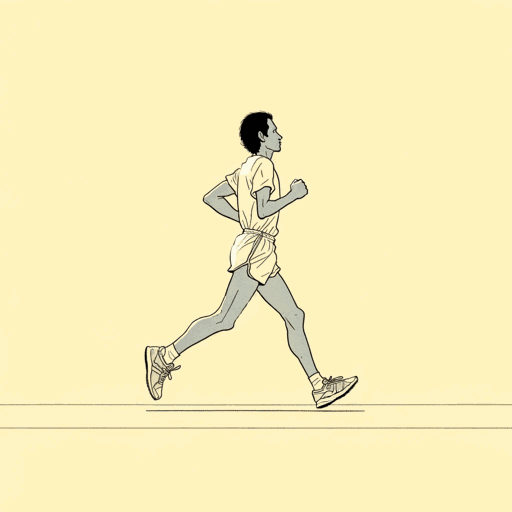53 pages • 1 hour read
Lawrence HillSomeone Knows My Name
Fiction | Novel | Adult | Published in 2007A modern alternative to SparkNotes and CliffsNotes, SuperSummary offers high-quality Study Guides with detailed chapter summaries and analysis of major themes, characters, and more.
Summary and Study Guide
Overview
Lawrence Hill’s novel Someone Knows My Name was first published in Canada in 2007 under the title The Book of Negroes. This work of historical fiction was published with its new title in the United States in 2008. The novel won the 2007 Rogers Writers’ Trust Fiction Prize and the 2008 Commonwealth Writers’ Prize.
Inspired by the historical document the “Book of Negroes,” a record of escaped African slaves who found freedom in Canada, Hill set Someone Knows My Name in the years 1745-1802, among the contexts of slave trade, the American Revolution, and the British abolitionist movement. The story spans the life of a young girl abducted from Africa and sold into slavery, whose countless migrations and journey to freedom depict perseverance and the power of language.
The novel opens in 1802 London as an elderly Aminata Diallo narrates her story in the first person through flashbacks. Her tone conveys deep yearning for her homeland. Born to a midwife and jeweler in the village of Bayo, West Africa, in 1745, Aminata is 11 years old when she witnesses the murder of her parents and is abducted by slave traders. For three months Aminata and other captives are marched to the coast, where they are branded and loaded onto a slave ship bound for the Americas. During her journey she meets Chekura, a young boy who looks out for her. The captives experience inhumane treatment aboard the slave ship, and many die. Aminata’s knowledge of languages and delivering babies earns her better treatment; she is kept in the surgeon’s room and serves as a translator.
In South Carolina Aminata is sold to Robinson Appleby, the owner of an indigo plantation. She is renamed Meena Dee and forced to assimilate to the culture of the Negro. There, a slave named Georgia becomes a mother figure to Aminata, teaching her to speak Gullah and protecting her from Appleby’s prying eyes. Mamed, a half-white slave, sees Aminata’s potential and secretly teaches her to read and write—a dream of hers since her father taught her Arabic prayers. When Aminata is reunited with Chekura, she clings to him as the only link to her past self. Appleby is angered by Chekura’s visits and rapes Aminata as a punishment. Aminata and Chekura marry in secret and have a baby, whom Appleby sells when he is 10 months old in an assertion of dominance. This pushes Aminata into depression, and an angry Appleby sells her to the Jewish indigo inspector Solomon Lindo.
Solomon Lindo brings Aminata to Charles Town, where he and his wife treat her with kindness and dignity. They teach her arithmetic and writing, and allow her to work as a self-hire midwife. Aminata’s strong will is fueled by a desire to return home, and she is disappointed by the lack of detail in maps of Africa and the white man’s fantasy of the savage African. She is devastated when a smallpox outbreak takes the lives of Mrs. Lindo and Dolly, the Lindos’ house servant. When Chekura finds Aminata years later, he informs her that their son died and that Lindo arranged his sale. Her trust in Lindo is shattered, and their relationship is strained. To regain her trust, Lindo takes Aminata to New York City as his secretary. In the story’s climax, Aminata takes back her freedom amid the madness of the American Revolution. She then builds a life for herself in Canvas Town, the collection of shacks inhabited by free Negroes. Aminata earns a reputation by teaching Negroes to read and write, and is then recruited by the British to write the “Book of Negroes,” a record of Black Loyalists granted passage to a new life in Nova Scotia. Though she is reunited with Chekura, a claim from Appleby prevents her from sailing with him to Nova Scotia on a ship she later learns sank without survivors. She leaves for Nova Scotia after Lindo manumits her.
In Nova Scotia Aminata works for the Witherspoons, a white family she comes to trust, and gives birth to a daughter she names May. When the whites ransack Birchtown, the town of free blacks, the Witherspoons abduct May and disappear. Shortly thereafter, Aminata befriends John Clarkson, a British abolitionist who leads the disillusioned Negroes to the colony of Freetown in Sierra Leone, claiming it is the promised land that Nova Scotia never was. Aminata then attempts to return to Bayo with the help of a slaver. When she learns of his plans to sell her, Aminata reaches a key turning point—she would give up anything, even her lifelong dream of returning home, for freedom. After spending a month as a local djeli, or village storyteller, she makes her final migration to London to testify before Parliament for abolitionist movement and to write her story. There, she meets the king and queen and is reunited with May. In the novel’s resolution, the elderly Aminata finishes narrating her story. The critical theme of the power of language resonates throughout the text, as Aminata uses language to tell her story, connect to others, and stand for what she believes in.
Related Titles
By Lawrence Hill




